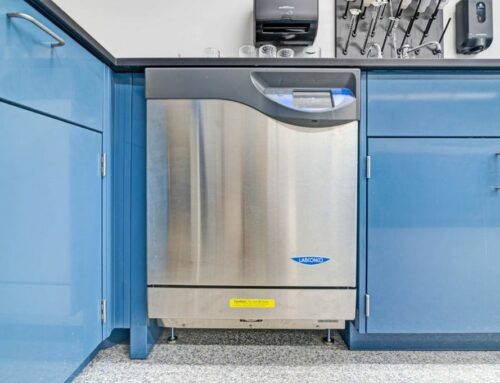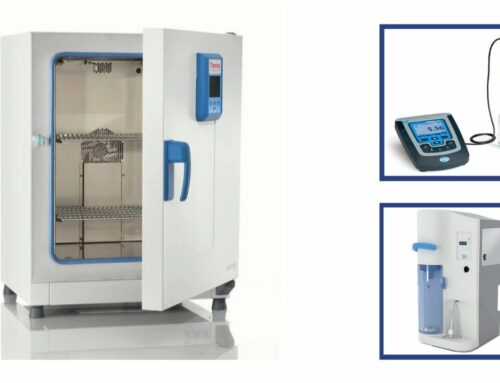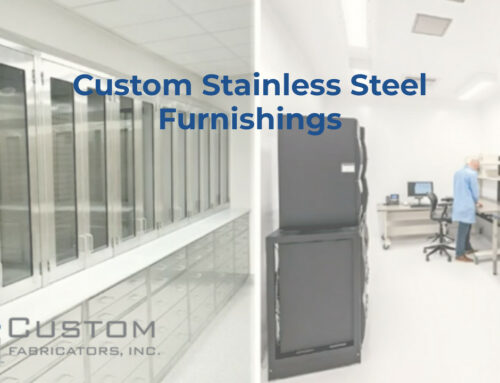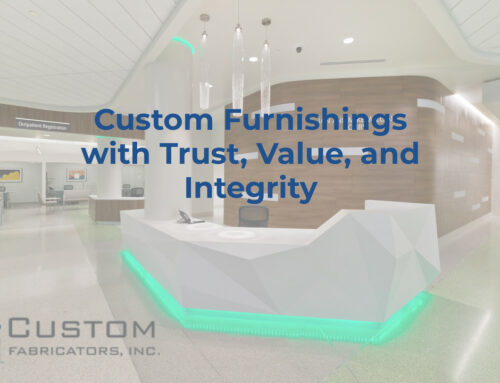The Benefits of Metal Laboratory Furniture
Metal lab furniture is made from welded tubular steel, modular steel, or epoxy powder-coated steel. Metal is easy to maintain and resists corrosion, chemicals, and abrasions. It can last for decades, so it’s no surprise that metal laboratory furniture currently accounts for roughly 80% of the industry.
Furniture Types
Metal laboratory furniture includes:
- Painted Metal Cabinets
- Stainless Steel Cabinets
- Tables and Benches
- Fume Hoods
Five Benefits of Metal Lab Furniture
- Sterile and Hygienic: More important than ever before. Metal lab furniture, such as stainless steel, is easier to clean and resistant to bacteria. Common industry uses are in healthcare, operating rooms and the food and beverage industry.
- Heat and Fire Resistant: In laboratories where explosion or combustion are a risk, metal lab furniture is ideal because of its high resistance to heat. Generally, lab storage cabinets built to code are able to withstand a degree of high heat for a period of time. Wood and metal have different code requirements.
- Low Maintenance: Metal is easier to clean, and in cases, non-porous. Most commercial cleaners can be used on metal, unlike on wood finishes.
- Longevity: Metal lab furniture is naturally resistant to chemical corrosion and surface abrasions. As a result, furniture longevity is significantly improved over other material types.
- Flexibility: Lab layout and use might change over time. Metal furniture, such as casework and tables, can be fixed or modular. These options provide much greater decision making and flexibility.
Use Cases

In industries where hygiene is a strong requirement, it is common to see stainless steel materials used. These include operating rooms, medical facilities, and pharmaceutical environments.
Additionally, hygiene in the workplace is now of the utmost importance. Older laboratories made mainly of wood casework and countertops are porous. They are therefore more difficult to keep sterile and clean.
Using non-porous and moisture resistant metal laboratory furniture is the best solution to provide a durable and hygienic laboratory space.
Steel Vs Wood Lab Furniture

Compared to wood options, steel and metal can be a more cost-effective solution.
Wood lab casework that requires customization involves a higher degree of handling. With the advances in process automation, it is common for standardized steel options to be a cost-effective option. Customizations to design and adding additional features could increase the overall project cost.
Aesthetically, wood and metal provide very different appearances. Painted metal lab cabinets are easily integrated into a lab design that focuses on matched or blended colors. Wood on the other hand can help create a warm environment but may present limited color and finish options.
Standardized powder-coated metal casework provides a high level of protection against the elements. Wood cabinetry and furnishings usually cannot be exposed to harsh cleaning agents and chemicals for risk of damaging the finish but are still a viable option in certain situations such as high school classrooms.
Summary
When durability and flexibility are required, metal laboratory furniture shines. With proper maintenance and care, furniture systems, benches, countertops, and casework should last for many decades.
Advances in production technologies make painted/powder metal furniture an attractive, cost-effective, and long term solution for your laboratory design needs.
Custom Fabricators has 60 years of experience and offer unmatched lab design, supply, and support services.
Get a quote today, or let us help you determine the best material for your application.






